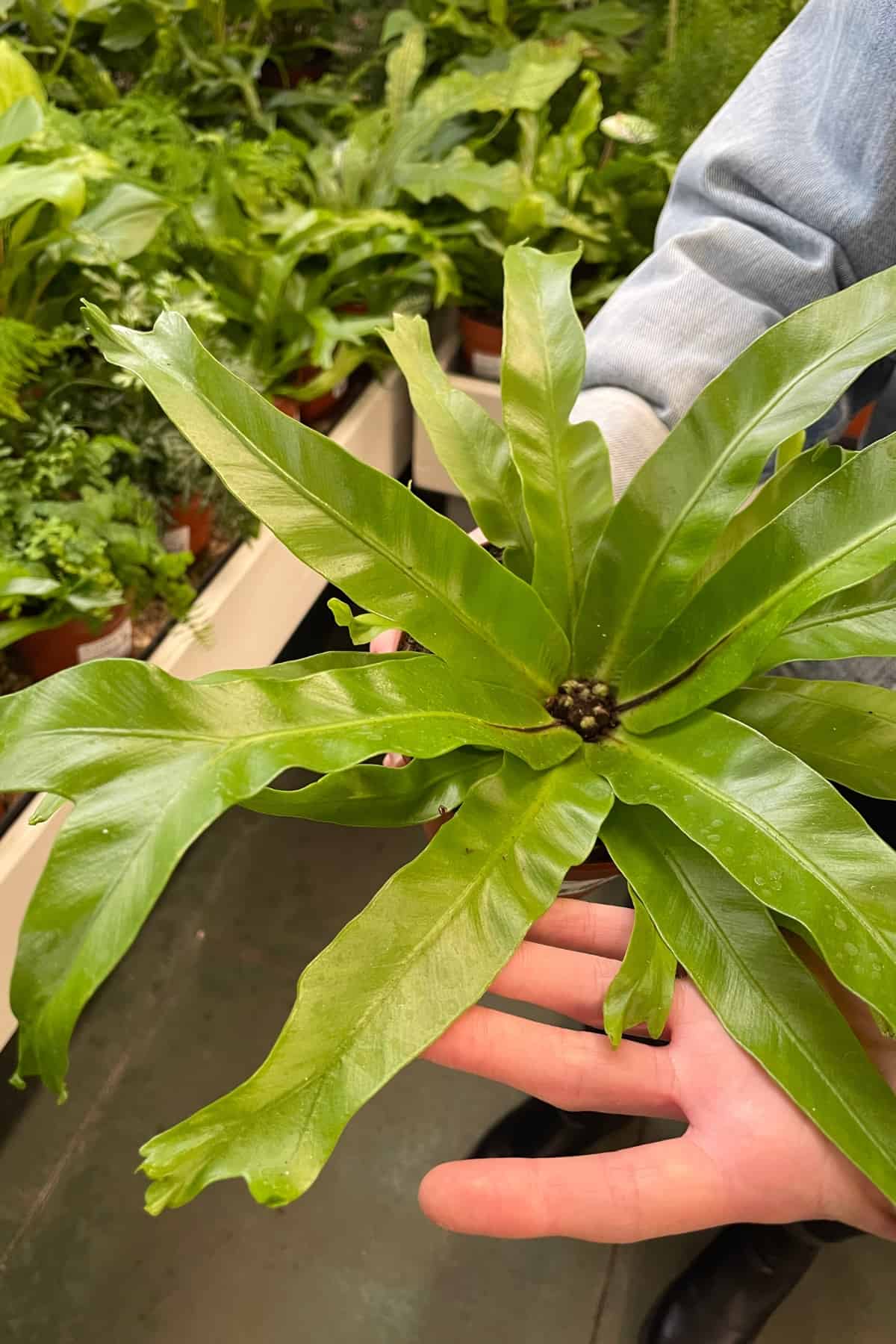The Crispy Wave Fern is a cultivar of the popular houseplant species Asplenium nidus.
A beautifully bright green fern with marvelous ribbon-shaped, ruffled leaves – which give it the common (and literal) name ‘Crispy Wave’.
It also goes by “Bird’s Nest Fern” for the way the leaves radiate outward, creating a bowl shape in the center.
This characteristic texture ensures a dynamic look from all angles, especially when the light hits the contours, exaggerating the rippled form.
But, it’s not the daring aesthetics alone that make this plant desirable. It’s a fairly low-maintenance plant when you know how to care for it.
And that’s exactly what I’m here to help with. Let’s go!

What is the Crispy Wave Fern?
Asplenium nidus ‘Crispy Wave’ is a tropical delight, a proclaimed air-purifier, and (surprisingly) an effective epiphyte.
In its native Southeast Asian countries, you’ll often find it naturally growing in the forked branches of trees. Perhaps another reason it earned its ‘Bird’s Nest’ status…
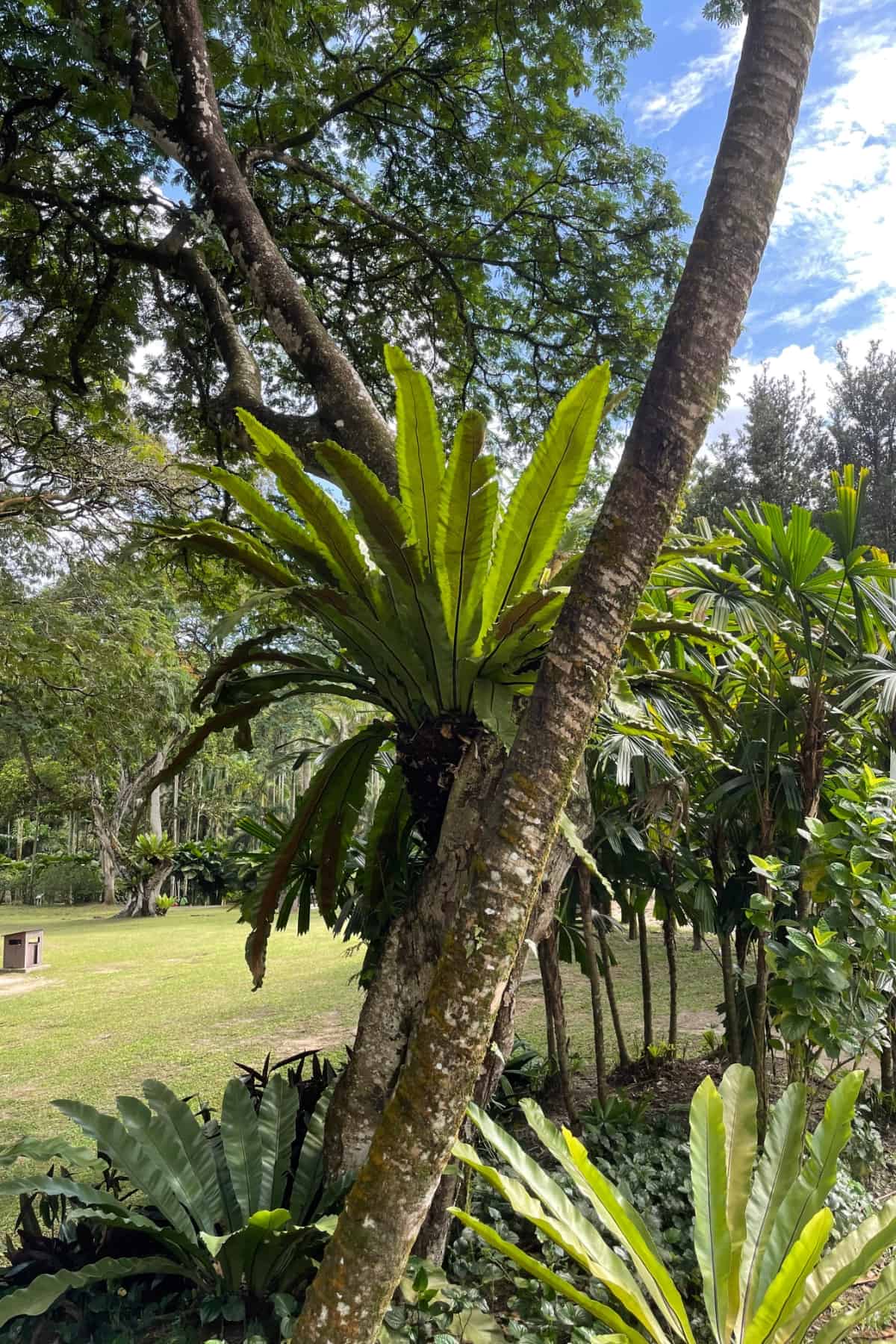
But fear not, you don’t need an indoor tree to host this plant – it’s plenty happy being planted terrestrially in the home.
And, being tropical in nature, it’s a perfect fit for a terrarium/vivarium build.
Where to Buy Asplenium nidus ‘Crispy Wave’
See the links below to purchase from reputable terrarium plant shops and marketplaces (may include affiliate links).
Crispy Wave Fern Care & Growth
| Plant Type | Fern |
| Lighting | Medium – high indirect light |
| Temperature | 60-72°F (15-22°C) |
| Watering | Regular, even moisture |
| Humidity | High humidity (60-90%) |
| Growth | 8-40 inches |
Lighting
Despite being found halfway up trees in the wild, the Crispy Wave Fern would be protected from bright sunlight by the dense canopy.
Meaning that bright yet indirect light is the perfect lighting condition for this lovely fern (surprise, surprise).
It can tolerate a little direct light, but I’d avoid keeping it in harsh rays where possible.
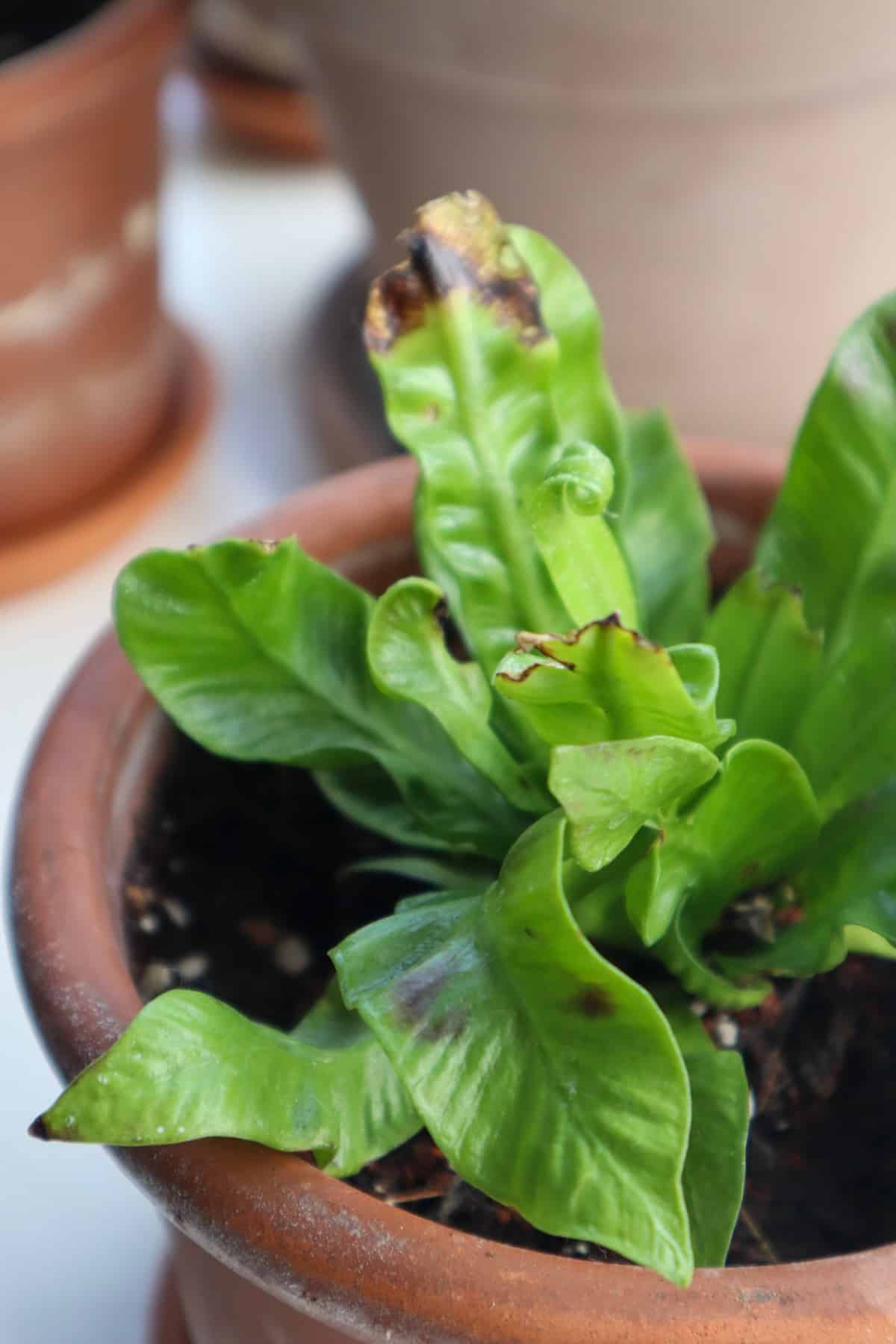
How do I achieve this practically, you ask?
- If you’re in the Northern Hemisphere – A North-facing windowsill (where it will only receive indirect sunlight) is perfect, with East-facing (where it will receive mostly indirect sunlight, with a little direct sunlight in the mornings) being the next best thing.
- If you’re in the Southern Hemisphere – Just take the previous advice, flip it and reverse it. A South-facing window sill is best, with West-facing windows being an appropriate fit, too.
Watering
If you’ve ever taken care of a fern, you’ll know that they’re thirsty little things.
The water-loving Crispy Wave Fern is no exception, and it will grow best in an evenly moist environment.
However, because it’s typically epiphytic, good drainage is essential if you want to avoid a root rot nightmare.
And, be sure to not water directly into the ‘nest’ – it’s a surefire way to create a pool of stagnant water. Which it really doesn’t like…
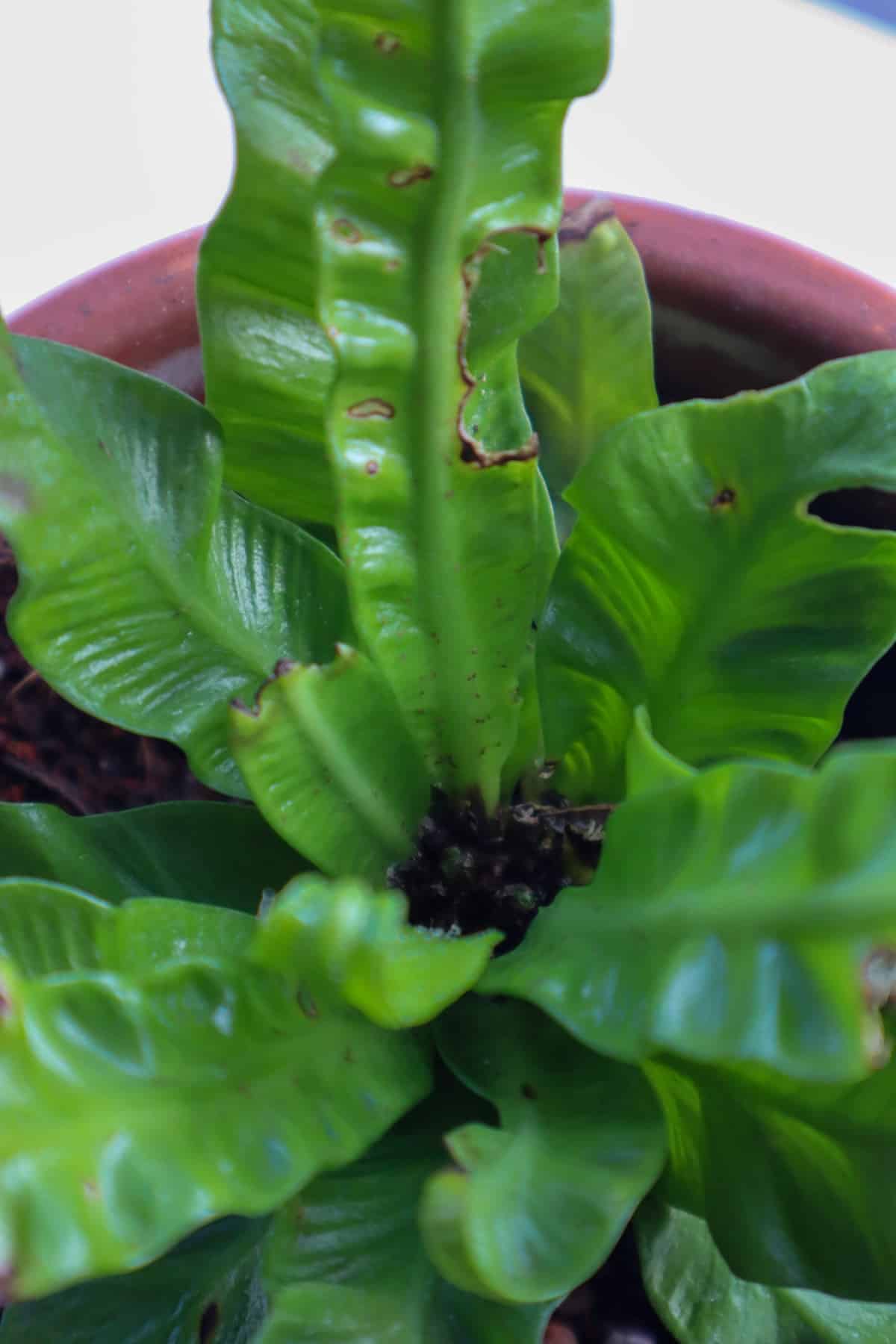
- As a houseplant – First things first, make sure your pot has a drainage hole. Water when the soil is feeling a little on the dry side, and then tip the excess water out of the tray. I find my plant needs watering much more frequently than my tropical houseplants so make sure to regularly check if it needs a drink.
- In a terrarium – Getting the watering right becomes much more critical in a closed system. Because you can’t take water out, I recommend only adding a little at a time – it’s very easy to overdo it. You can always use a drainage layer for some extra peace of mind.
Substrate
When grown terrestrially, Asplenium nidus ‘Crispy Wave’ can be a tad demanding with its substrate desires.
After all, they’re used to growing on trees, not in soil.
Because its roots are typically free and easy, the main thing you’re going to want in a substrate is root aeration.
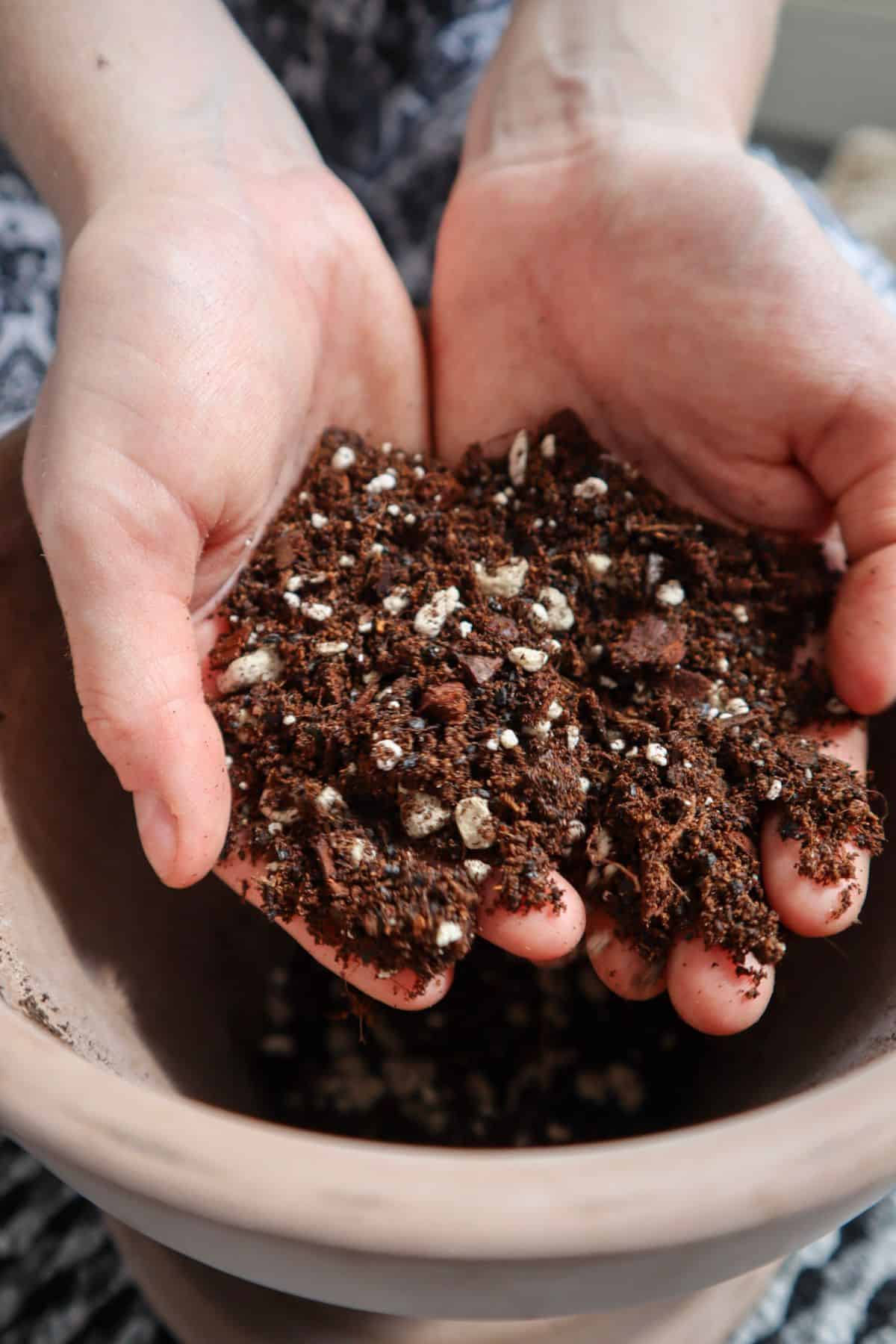
It does have small roots, so the substrate must be able to retain moisture in the top layer.
To best achieve this, add some soil supplements (like pumice or charcoal) that can help with both water retention and drainage, and you’re good to go.
I know it sounds counter-intuitive, but I promise your fern will thank you!
Just remember to add something like earthworm castings to your substrate if you’re putting your plant in a terrarium because it’s really tricky to add nutrients to the system post-build.
👉 I’d recommend our tropical substrate mix (with pumice) for maximum aeration.
Temperature & Humidity
As a native jungle fern, the Crispy Wave will thrive in lovely, warm, humid conditions.
A typical household 60-72°F (15-22°C) range will be absolutely fine, and it would certainly be happy in even warmer conditions.
Though it can be a little sensitive to sudden temperature changes, so I’d make sure it’s away from drafts and radiators. Keep your home at a consistent temperature where possible.
If there’s one thing this fern absolutely adores, it’s a humid environment.
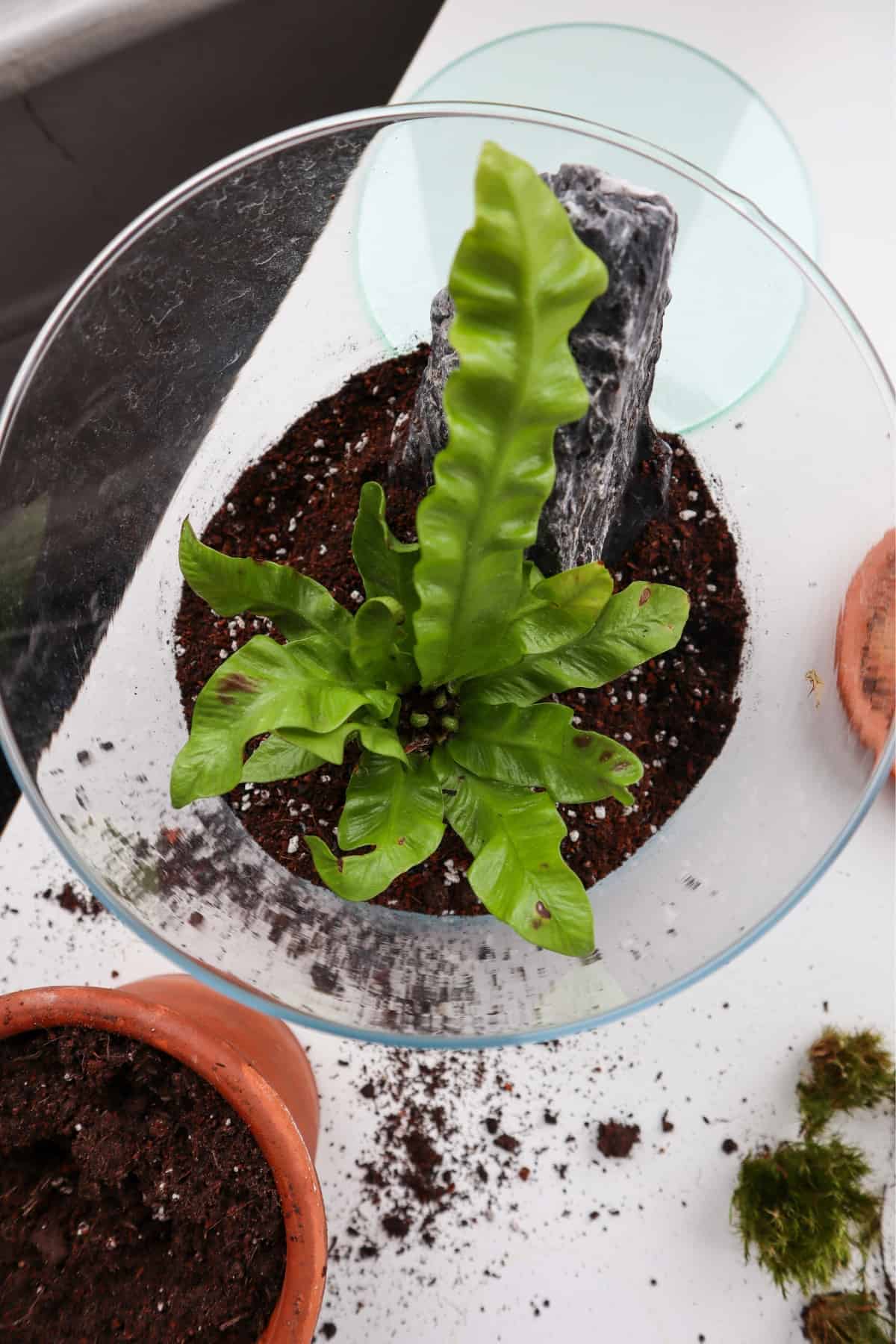
Aim for 60-90% humidity. This will be super easy to achieve in a terrarium, and while it can be a little more challenging in the home, I have a few tricks up my sleeve…
- Group your plants together (yes, this is your express permission you’ve been wanting to buy more plants).
- Keep watering cans around the room to evaporate.
Voila!
Growth
Under ideal conditions, Asplenium nidus ‘Crispy Wave’ can grow very large. I’ve seen some absolutely mega epiphytic plants reaching around 4ft+ in length.
But while epiphytic in the wild, it’s realistically too big to do this in a terrarium (unless you have raw horticultural audacity I can only dream of and some absolutely monstrous branches, that is)…
Thankfully, they tend to grow a lot less quickly when planted terrestrially, so you’re unlikely to have a Jurassic Crispy Wave taking over your container any time soon.
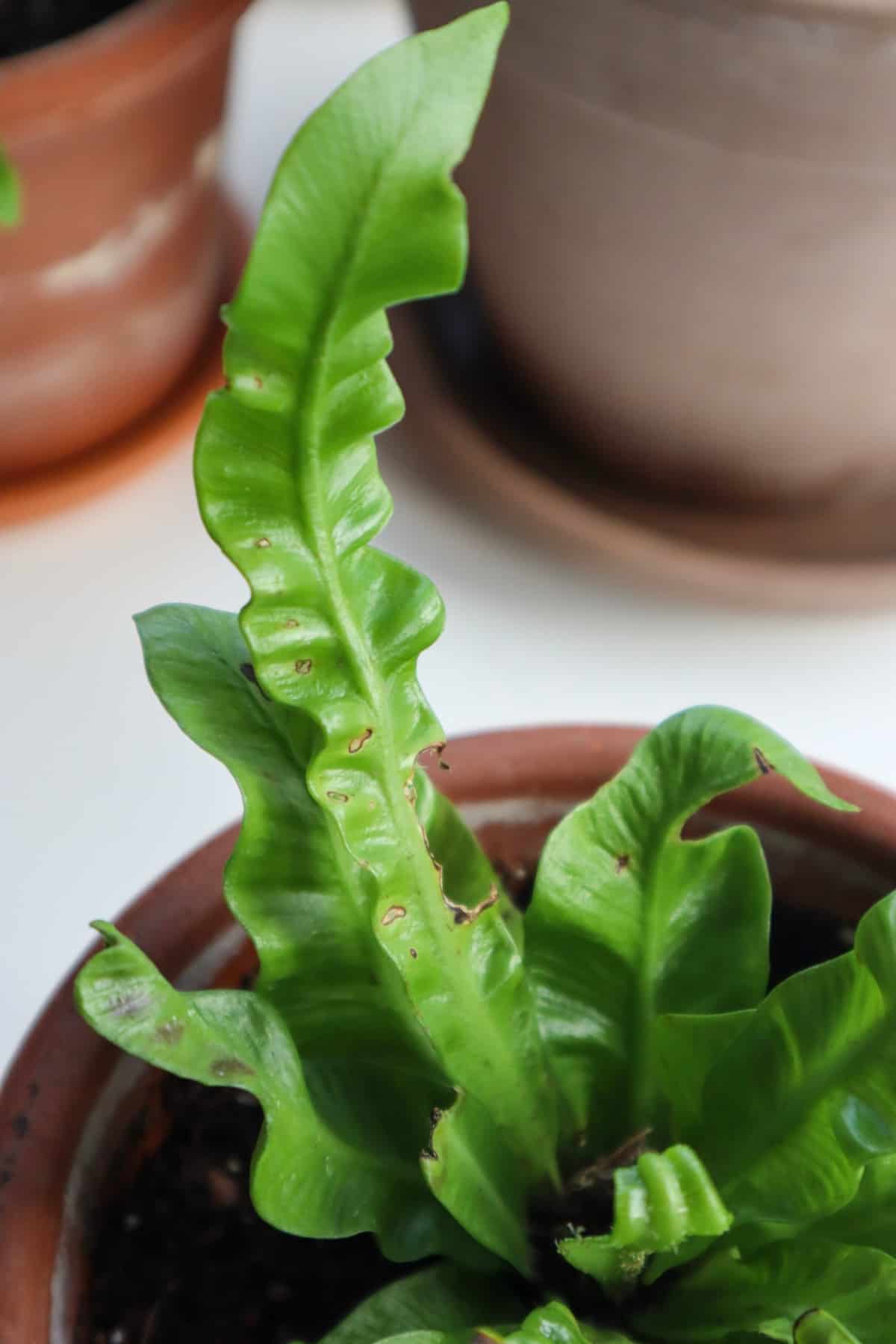
That being said, if your terrarium goes the distance, overgrowth could certainly be an issue over time. Feel free to swap it out/ trim it back as you, please.
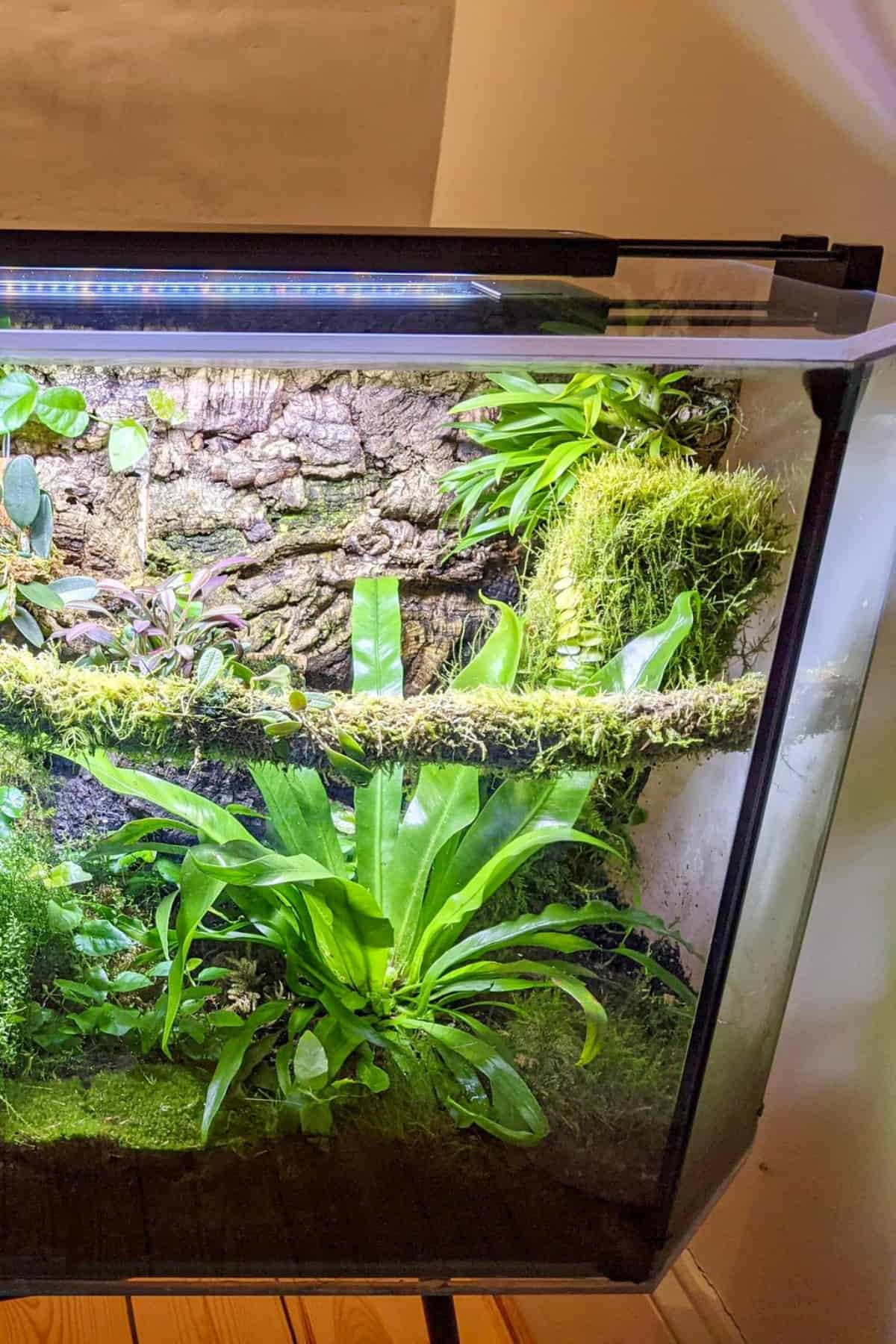
Kept as a houseplant, this fern appreciates a well-balanced liquid fertilizer once a month or so during spring and summer.
Propagation
The Crispy Wave Fern is a challenging plant to propagate.
Unlike most ferns, Asplenium nidus cannot be divided.
Well, not usually. Sometimes, healthy plants produce baby offshoots, which can be carefully separated. But root division of a singular plant won’t work.
The easiest way to propagate them is by spores, and that’s not exactly straightforward.
You’ll need a mature plant with mature spores and a bit of patience and know-how.
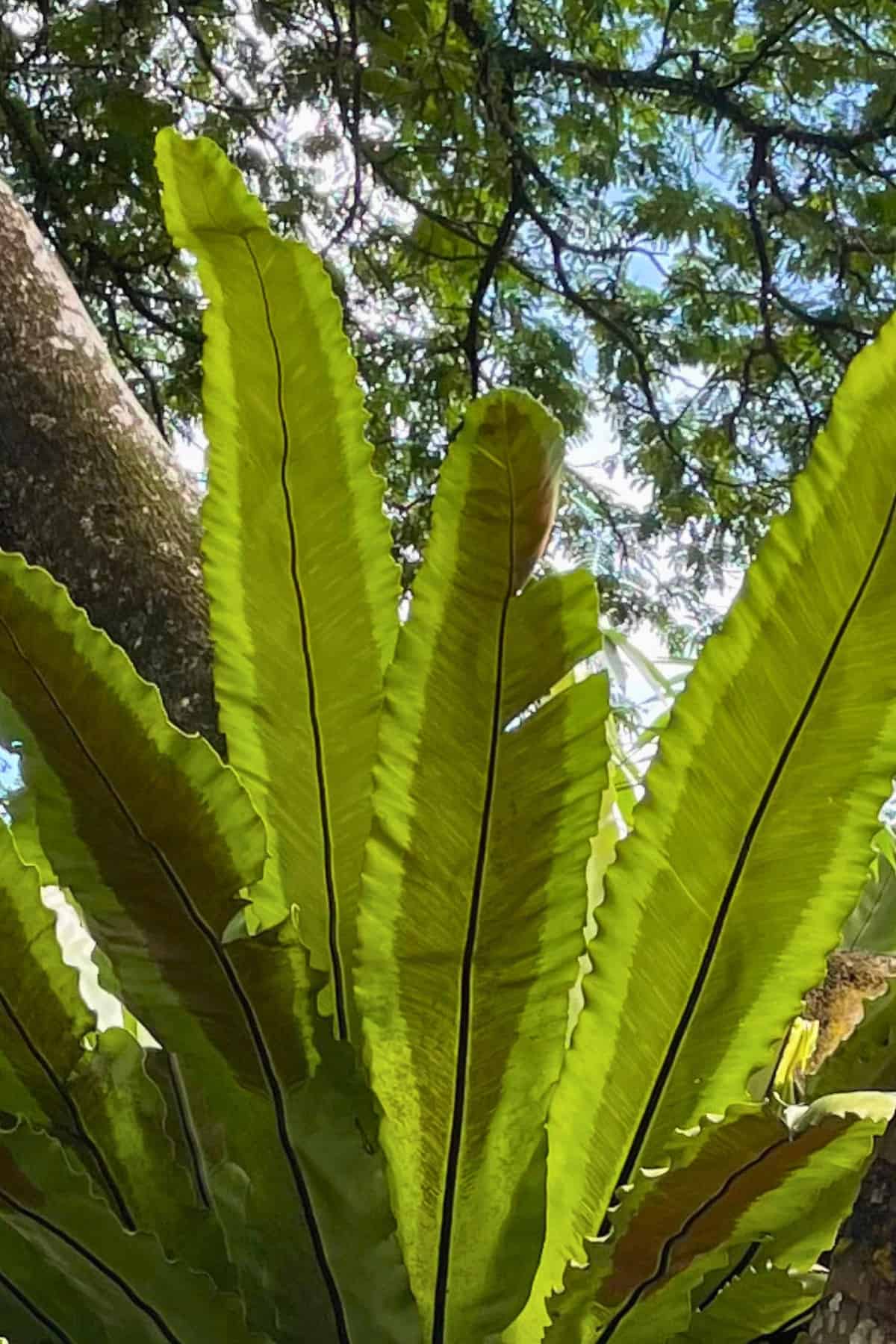
Crispy Waves are inexpensive to buy and easy to source, so often, it’s more effective to grab a new one and save time and effort.
Varieties & Similar Plants
If we were to break down the Aspleniaceae family tree, we’d be here for hours. It is absolutely massive.
There’s even quite a range of Asplenium nidus, let’s have a look:
- Asplenium nidus ‘Osaka’ – very similar to the Crispy Wave, but it takes the waviness to another level, with long fronds and frilled edges.
- Asplenium nidus ‘Crissie’ – long fronds spilling from a central point like the Crispy Wave, but the ends of the fronds are forked like little hands.
- Asplenium nidus ‘Leslie’ – looks like lettuce. Literally.
And if you’re somehow still fern-hungry there are even more nidus up for grabs. Hurricane, Champion’s, and Pleated are all readily available, and each boasts its own unique features.
